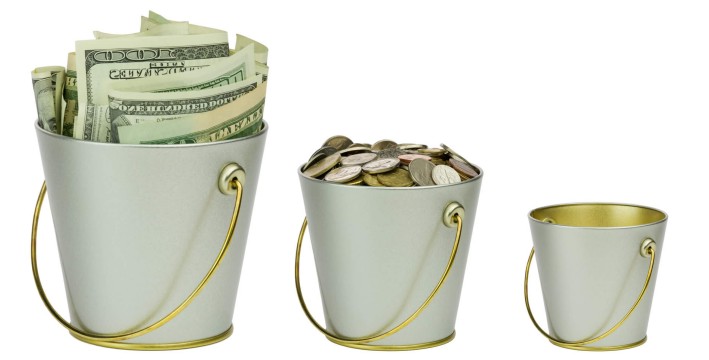For years now I’ve had a chequing account that all my money goes into and I’ve been keeping track of the money that I considered my “savings” using a spreadsheet. Since I am now making enough money where it makes sense to have a savings account, I was wondering how people organize their accounts? In an ideal situation, I would like to have almost all my earnings go in my savings account, and have just the month’s budgeted money go into the chequing account. Unfortunately this is not a realistic way to do this, since it puts me at a risk of overdrafting my chequing account.
My goal is to save myself some of the effort I spend on maintaining my spreadsheet while still being able to see at a glance how much I have in savings.
I think your instinct to use two accounts (a savings and a chequing account) is good, as is your idea of phasing out the spreadsheet. It’s typically useful to streamline and simplify the management of your finances as it makes things easier to understand and adjust with minimal effort. Plus it will mean less work for you.
My suggestion is that your idea is good, but your order of doing things may be backwards. You suggested dumping all your income into your savings account and then transferring money over to the chequing account as needed in order to make bill payments. The danger, as you said, is that your chequing account will run dry or a bill payment will come out and the account will run into an overdraft situation.
If I were in this position, I would do things the other way around. I’d deposit my income into the chequing account. Then, once the chequing account reached a certain level, I’d take any extra money out of the chequing account and move it into my savings. This leaves a small buffer in the chequing account to handle bills and emergencies. Meanwhile, your savings account will slowly grow and start to accumulate interest over time.
To visualize what this looks like, let’s imagine each account as though it were a bucket. The first bucket is your chequing account. It should hold approximately enough money to cover your monthly bills. Once that first bucket is full, it overflows into the next bucket, which is your savings account.
The savings account should probably grow to hold enough money for you to pay your bills for six months. Once this bucket is full, it can overflow any extra money into an investment account – typically a tax free savings account (TFSA). In other words, money should flow this way:
Income -> Chequing -> Savings -> Investments
Let’s pretend for a moment that your bills and living expenses come to around $3,000 per month. Every two weeks some income arrives in your chequing account. Then some goes out to cover bills. Assuming you make more than you spend (which hopefully you do), the balance in your chequing account at the end of each month will gradually grow.
Once the chequing account holds more than $3,000 at the end of the month then you can move the extra money into your savings account. For example, if you end the month with $3,500 in your chequing, then move the extra $500 into your savings.
Six months of savings for an emergency fund at $3,000/month would be $18,000. Once your savings account accumulates $18,000 you can use in emergencies, then it’s time to think about putting any additional money toward something long-term. For example, you might put any money from your savings that puts it over $18,000 into a TFSA investment or maybe plan to use the extra money as a down payment on a house.
Another way to think of this situation is your chequing account is for short-term items (monthly bills, groceries, and small purchases). When you have extra money after your short-term needs are met, you can think medium-term with a savings account. This handles big purchases and emergencies. Any money beyond the buffer in your savings account can go toward long-term planning, such as a house or a retirement investment fund.

Comments are closed, but trackbacks and pingbacks are open.